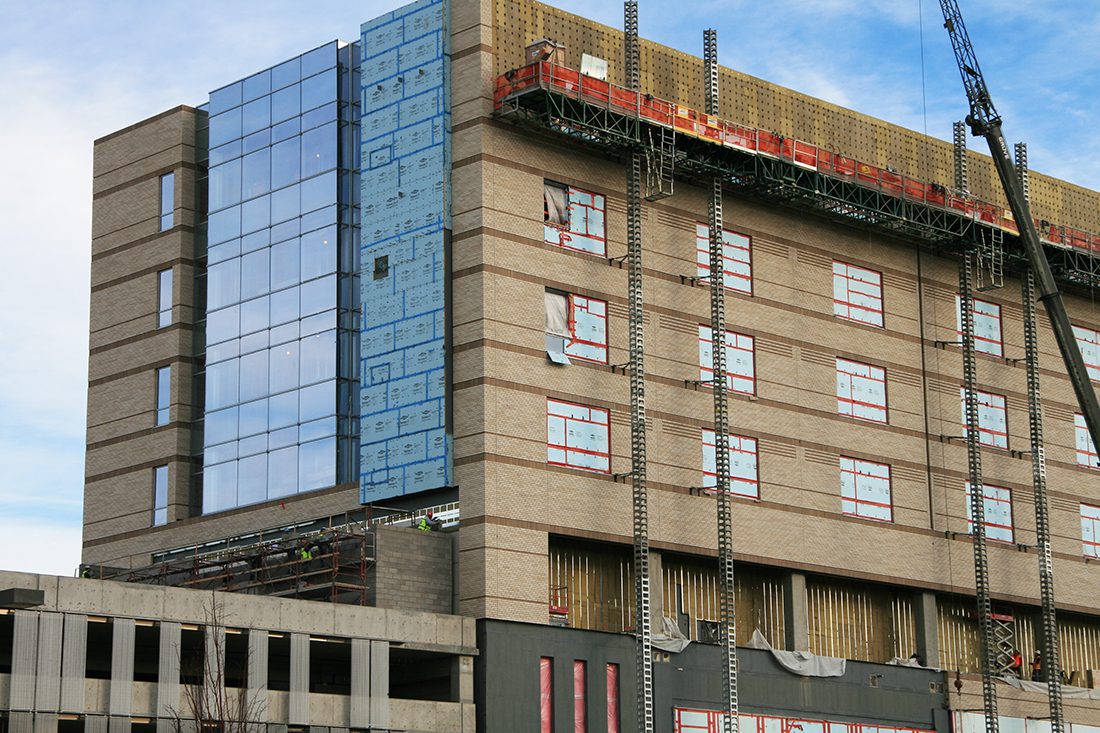How to Plan for Cold Weather Masonry Construction?
Masonry construction in cold conditions requires several precautions from the builders. To avoid seasonal delays associated with frigid weather construction, the builder or contractor uses dynamic procedures, equipment, mason contractors, and supplies, among other things.
The “Specification for Masonry Structures” of ACI 530.1-08/ASCE 6-08/TMS 602-08 outlines the minimum requirements for cold weather masonry construction. On sites with temperatures below 44 degrees Fahrenheit or 4.4 degrees Celsius, masonry construction must be meticulously prepared. The properties and behaviour of mortar used in masonry are altered by cold weather, leading to fissures and other issues. Therefore, during frigid weather, special measures must be taken to keep the mortar workable and warm.
To ensure the success and longevity of a cold weather masonry construction project, it is necessary to carefully consider several factors. Here are some essential steps that will help you plan for construction in cold weather:
- Examine the weather report: Monitor the weather forecast prior to and throughout the construction period. Ensure that you are aware of the expected temperatures, wind conditions, and precipitation.
- Prepare the building site: Remove any snow, ice, or detritus from the construction site that may impede the masonry work. Ensure that the site is graded and discharged appropriately to prevent water accumulation and freezing.
- Select suitable materials: Choose materials designed specifically for frigid weather applications. For instance, choose bricks, mortar, and additives that can withstand low temperatures and freezing and thawing cycles.
- Protect materials from freezing: Prevent the hardening of materials by storing masonry materials in a heated or insulated space. Use insulated comforters or heat sources, if necessary, to protect materials from cold temperatures on the job site.
- Adjust mortar mixture: Modify the mortar mixture to account for the frigid weather. Utilize compounds or accelerators designed for cold-weather brickwork to enhance workability, setting time, and strength development. Follow the manufacturer’s dosage and application instructions precisely.
- Heat water:Ensure that the water used in the mortar mixture is not too frigid by heating it. Cold water can affect the mortar’s setting and curing, so heated water should be used to sustain the proper temperature.
- Protect fresh masonry work: Protect newly installed brickwork from frigid temperatures. Utilize insulating blankets, windbreaks, or temporary enclosures to maintain the correct curing temperature and prevent moisture loss.
- Plan tasks accordingly: Whenever possible, plan the construction schedule to take advantage of the day’s warmest hours. Avoid working in extreme cold or when the temperature is expected to drop abruptly.
- Provide temporary heating: If necessary, use temporary heating devices to warm the construction site, particularly when working with delicate materials or during critical curing periods. Ensure that all heating equipment is properly vented and poses no fire risk.
- Observe the curing process: During the curing process, inspect the condition of the masonry on a regular basis. Freezing can result in fractures and diminished strength. Take the necessary precautions to protect the brickwork from chilling until it attains sufficient strength.
- Seek professional guidance: If you are uncertain about any aspect of cold weather masonry construction, you should consult with seasoned masonry contractors or engineers who specialize in cold weather construction. They can provide valuable advice and direction based on their knowledge and experience.
Keep in mind that the specific requirements for cold weather masonry construction can differ by region and by project. When planning for cold weather construction, it is essential to consider local building codes, industry standards, and manufacturer recommendations.
Disclaimer: This content is provided solely for your review. Erusu Consultants takes no liability for this article. The reader is advised to form their own opinion. Please consult a structural engineer before making any final decisions.






